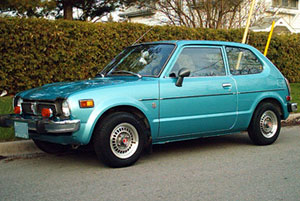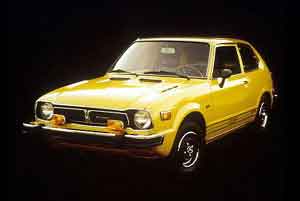
What is a Honda Civic Type RS
1StGenCiViC The most admired of the First Generation Honda Civic's
- Randy
- Administrator

- Posts: 1447
- Joined: April 7th, 2005, 9:06 pm

- Province/State: Ontario
- Hometown: Ajax
- Model: 1978 Hatchback
What is a Honda Civic Type RS
What is RS Civic
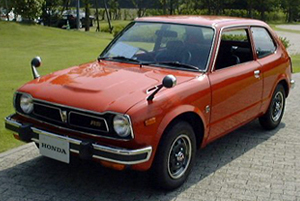 The RS is the ultimate factory Civic.
The RS is the ultimate factory Civic.Dubbed Road Sailing, it was a more performance oriented civic opposed to the standard economy-boxes we all know. It was released with an 1170cc EB1 motor pumping out 70hp compared to the 50hp of the standard model. Engine modifications included twin Keihin carburetors, a freer flowing exhaust manifold, longer duration camshaft (15 degrees), domed pistons (bumped compression up to 8.6:1), and strengthened crank bearings. Handling was increased with a set of stiffer springs (30%), shorter stiffer struts and 13" wheels wrapped in 155-80-13 tires. The wheels were black with a polished lip and had a red "H" center cap- this is where the red Honda "H" started. Besides the RS badge on the front grill other exterior options included flared fenders, fender mounted rear view mirrors, and a slightly different bumper assembly. The RS's were only released in warm red/orange paint schemes. The predominantly black vinyl interior included a wooden steering wheel and shift knob, center console, grab handles, a mechanical tachometer graded to 7k rpm, and a center auxiliary pod with fuel/temp gauges and an air vent. The US gauge pods merely had the gauges for fuel and temp.
RS Owners
The RS head was also different from the standard EB1. The combustion chamber was deeper, which allowed larger valves to be fitted. The pistons where domed to make up for the increased combustion volume in
the head.
Along with larger valves, the head had larger ports. If you've every seen the original Honda inlet & exhaust gaskets on the standard head, you would have seen that the holes in the gaskets for the ports
where a few millimeters bigger than the ports on the standard head. This is the port size on the RS & GL engines.
Which leads me to the EB1 engine in the GL model.
This basically the RS engine but with a down-draught carburetor. In this case, it was a different inlet manifold to standard (larger diameter runners to the ports) with a much larger down draught carburetor. This
carburetor was also used on Datsun 1600 engines, so parts were much easier to find (back then) than for the side draught Kehin-Seki. The GL had slightly less power than the RS, but still made for a very fun Civic.
Back to pistons, using the RS pistons with a standard EB1 head gave a compression ratio around 11:1. I had an engine built like this, with a head that had been ported and had larger valves, I believe, from a Coupe 9. What a blast that engine was, but it would ping horribly below 3000 rpm. Had done around 140,000 MILES before it died, piston cracked from too much pinging
Murray.
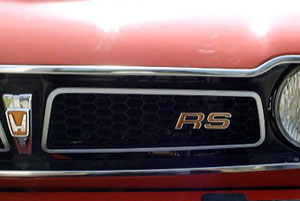
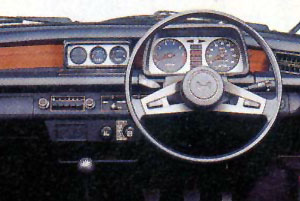
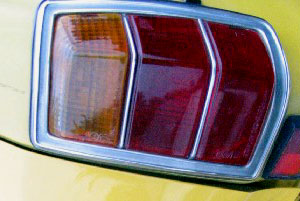
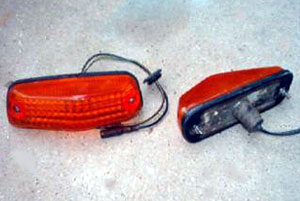
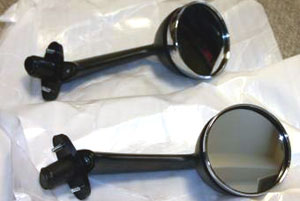
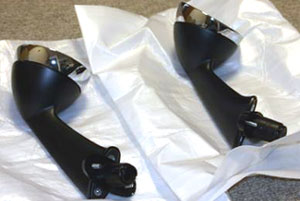
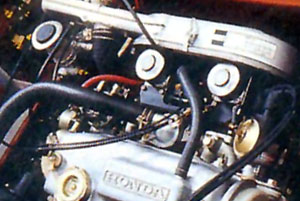
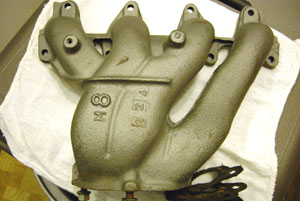
Code: Select all
Year/Model Motor CC Bore Stroke HP Torque Compression
74-75 Civic RS SB1 1169 70mm 76mm 76@6k 10.3/4,000 (kg-m/rpm) 8.6Source Archives
Valve timing
( camshaft spec )
Intake open
ATDC 10
ATDC 10
ATDC 5
degrees @ 1mm lift
Intake close
ABDC 20
ABDC 30
ABDC 30
degrees @ 1mm lift
Exhaust open
BBDC 30
BBDC 40
BBDC 40
degrees @ 1mm lift
Exhaust close
BTDC 10
BTDC 10
BTDC 5
degrees @ 1mm lift
Max valve lift
8.4 mm
---------------------------------------------------------------------------------
camshaft: stock height(IN-36.7mm, EX-36.6mm) and 15 degrees longer than standard.
max. valve lift: 8.6mm
Honda camshaft spec is always defined at 1.0 mm valve lift
INTAKE- open: 5 ATDC
close: 30 ABDC
EXHAUST- open: 40 BBDC
close: 5 BTDC
The RS camshaft has the stock lift, and about 15 degrees more duration than stock. You don't really need to pay much attention to specs unless you really know a lot about camshafts. Depending on how they're measured, different cams can seem comparable when in actuality, they're not. What you need to find out is how the cams affect the engine. The RS camshaft is a good performer from idle to about 6500 rpm. It has a smooth idle and picks up well. The #68 camshaft is good for 3200-7000 rpm. It idles a little lumpy but not too bad for the street. from 0 to 3200 it is not as quick as the RS, but it makes up for it on the top end. With an adjustable pulley, small diameter tires, and the 4.93 differential, you won't even notice the short comings of the lower rpm.
Finding an RS camshaft will be hard. It is basically a stock lift camshaft with more duration. Made 68 hp on the stock RS. It has power from idle to about 6500-7000 rpm. The Mugen R1 can be bought from Racecraft. (http://www.users.bigpond.com/Racecraft) I think they weld up and regrind your camshaft. I have never used this camshaft but it is supposed to be a really good grind. No idea about power. The Webcam can be bought from Webcaminc.com. They can provide a new camshaft or can regrind yours (makes the base circle smaller requiring lash caps). Power starts at about 3500 and pulls strongly to about 7000. Mine makes about 90-95 HP. Very lumpy idle.
I recently found Elgin cams has about 6 grinds available for 8 valve Hondas. Never tried them, but it might be worth a look.
Todd
RS Cams and Springs
Here’s some more camshaft specs from Tsuyoshi Hasshan. I'm not sure of his source or how accurate they are.
Valve timing at 1mm lift (net)
Mugen R1( we call MS-1) : btdc 10 - abdc 40 / bbdc 40 - atdc 10
Yoshimura: btdc 15 - abdc 45 / bbdc 45 - atdc 15
(Mugen MS-2: btdc 25 - abdc 55 degrees with more lift.)
It’s sort of funny talking Web Camshafts (http://www.webcamshafts.com/pages/honda-auto.html#1" onclick="window.open(this.href);return false;) and Mugen camshaft grinds.... as Web basically copied what Mugen was doing at that time, with slight lobe changes and those grinds haven't changed since the 70's. I have an original Mugen MS1 Camshaft and the power is pretty much in the same range that Todd described for the Web Grind with the same results. RaceCraft is no longer and wasn't the source anyway.
Colt Cams Is also a good choice. http://www.coltcams.com I have used them, and while some of their 1.2 cams are old standbys -they will grind custom stuff too. He does have a grind that's almost spec for spec for a RS grind (using an early prelude camshaft lobe design I seem to remember) that idles fairly smooth and kicks HP up in the 6500 range too.
With D. Elgin cams you will get a much more personalized service if you fill out the camshaft forms and their camshaft designs seem to have kept up with the times better. http://elgincams.com A few members here have had cams ground including myself (not Honda for me though) and been very happy with the results. There may be HP to be gained in a custom camshaft design over the older ones, especially for competition use.
Web Camshafts has no new camshaft blanks last time I checked. Blanks or a hard welded stock camshaft are required on some really big camshaft grinds, probably not something you would want to run on a hot street Civic anyway. The aftermarket blanks are sometimes made of softer metal and like to eat the oil pump gear if used for lots of miles. (Two camshaft grinders have told me this; I have not experienced it myself)
Some mild regrinds can get by with stock springs if they are in good shape. RD Springs in Ca. Used to carry good springs for the 1.2 -BUT The last time I checked they must have some new people, they Suck now and can seem to find the correct springs for a 1.2, but want to sell you some cruddy things. Isky Cams also list springs but if you look at how many shims are required.... can you say Mickey Mouse.
I did find what ended up working very well for me. http://www.schneidercams.com/parts/springs.htm
Schneider Racing Cams # 68018 Fits the early Eb1-2, "S" head, standard valve spring retainers perfectly and the pressure was what I was looking for. They are V-tec springs. Now I did not get them directly from Schneider so check the measurements very carefully and consult your engine machinist and measure everything related if in doubt.
Don
RS Civic close ratio gearbox
First gear 3.00 Teeth 39 - 13
Second gear 1.79 34 - 19
Third gear 1.18 26 - 22
Fourth gear .85 22 - 26
Fifth gear .71 20 - 28
Diff 4.73 71 - 15
Close ratio gearboxes use different combinations of gears to keep the engine within its power band throughout the racing. With a close ratio gearbox, when you shift from 2nd to 3rd your engine doesn't drop down to such a low RPM. By keeping the engine turning within its power band, you can maintain constant acceleration throughout the course of the race.
Drawbacks of close ratio gear box? Since your close ratio gearbox reduces the amount of RPM drop between gears, it also reduces the overall span of speed you can ride in the same RPM range. Depending on the final drive ratio, you may find that you can't cruise at 60 anymore, or that you can't take off as easily from a dead stop. Such are the trade-offs. You wanted to race, didn't you? Or did you want to cruise? One set of gears can be a compromise between both worlds, but no set can give you the best performance on the track and on the street.
[center]Civic RS Parts List[/center]
Special thanks goes out to Don Forman for sharing these pdf documents.
RS Civic Parts
images/1stgeneration_civic/articles/120 ... s_List.pdf

Complete RS Exhaust
2012 new Honda Civic vs 1st Generation Civic RS
https://youtu.be/850ugDiSlvE
I Like how the RS has no rear side marker lights, it looks a lot cleaner.
I just have to wonder why there are so many differences of the fronts under and on top of the bumper lights.
Anyone know the the round holes are for under the bumper are for. Never noticed that before.
http://www.1stgencivic.com/gallery/inde ... tegory/354


